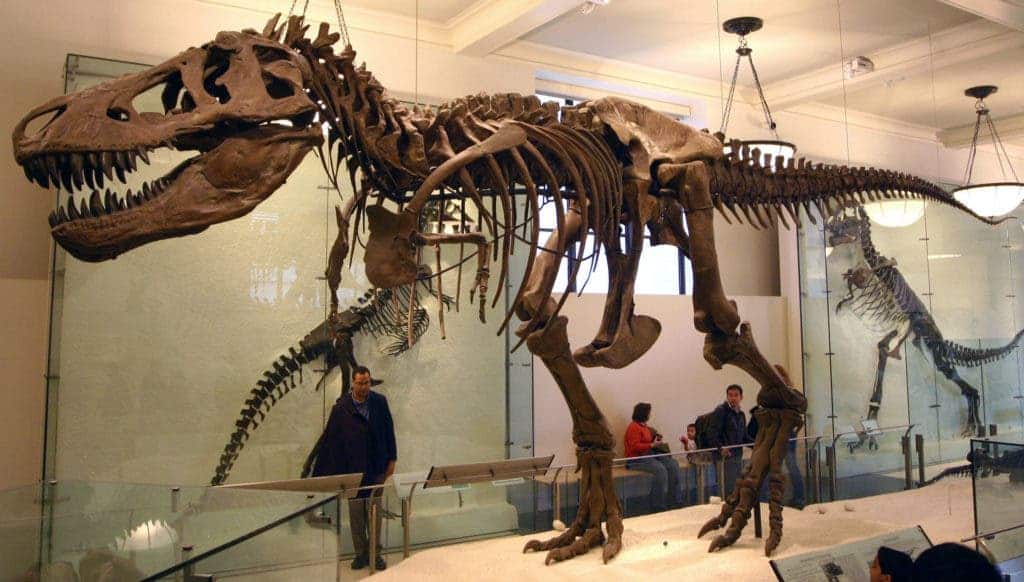The Tyrannosaurus rex, the most feared and iconic of all the dinosaurs, had a cooling system in its skull that allowed him to deal with prehistoric heat and humidity. The new study from scientists in Missouri, Ohio, and Florida, challenges previous beliefs about this cranial structure.

T. rex, known as one of the largest meat-eating dinosaurs on the planet, has two large holes in its skull, called the dorso-temporal fenestra — basically two “windows” in the back of its head. Scientists used to believe that they were filled with muscles that helped with jaw movements but now this was challenged by a new study.
Similar holes can be found in the skulls of a class of animals known as diapsids, an extremely diverse set of animals grouped together because of this particular feature (this class includes not only crocodilians, but also birds, lizards, and tuatara). The holes are thought to have evolved about 300 million years ago.
It’s really weird for a muscle to come up from the jaw, make a 90-degree turn, and go along the roof of the skull,” Holliday said. “Yet, we now have a lot of compelling evidence for blood vessels in this area, based on our work with alligators and other reptiles.”
Researchers looked at alligators at the St. Augustine Alligator Farm Zoological Park in Florida, using thermal imagining to translate heat into visible light. The new evidence obtained offers a new theory and insight into the anatomy of a T. rex’s had, they argued.
Because alligators are cold-blooded (or ectothermic) their body temperature is dependent on the temperature of their environment. This means that their thermoregulation processes are very different from warm-blooded, or endothermic, organisms.
“We noticed when it was cooler and the alligators are trying to warm up, our thermal imaging showed big hot spots in these holes in the roof of their skull, indicating a rise in temperature. Yet, later in the day when it’s warmer, the holes appear dark, like they were turned off to keep cool,” said Kent Vliet, coordinator of laboratories at the University of Florida’s Department of Biology.
The researching team worked with the thermal imaging data to examine fossilized remains of dinosaurs and crocodiles, trying to understand how this hole in the skull changed over time.
“We know that, similarly to the T. rex, alligators have holes on the roof of their skulls, and they are filled with blood vessels,” said Larry Witmer, professor of anatomy at Ohio University’s Heritage College of Osteopathic Medicine. “Yet, for over 100 years we’ve been putting muscles into a similar space with dinosaurs. By using some anatomy and physiology of current animals, we can show that we can overturn those early hypotheses about the anatomy of this part of the T. rex’s skull.”
It’s not yet known whether dinosaurs in general and T. rex in particular, were ectothermic or endothermic. The topic is actually under debate, with some scientists thinking the former, some the latter, and some believing dinosaurs fell somewhere between the two – a feature called mesothermy.
Nevertheless, what the new research published in the journal The Anatomical Record, suggests is that T. rex and other dinosaurs used some of the thermoregulation tactics of ectotherms. The actual meaning of this within the broader context of their metabolisms is yet to be explored.


